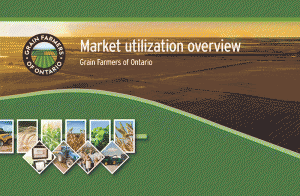Winter wheat growth
DOES INTENSIVE MANAGEMENT PAY?

WHILE WINTER WHEAT harvested acres are declining in Michigan, yields per acre have increased in recent years, and producer interest in intensive management to further boost yields has grown.
In response, researchers at Michigan State University are studying some of the most common inputs for intensive management of winter wheat in an attempt to determine yield responses and evaluate whether yield gains from specific inputs can withstand commodity price fluctuations and make winter wheat a better revenue-generating cash crop.
The research, begun in 2015, looked at the effect of two nitrogen rates (90 pounds per acre and 108 pounds per acre), urease inhibitor, nitrification inhibitor, plant growth regulator, fungicide, and foliar micronutrients on soft red winter wheat. Researchers conducted omission field trials in which one control (enhanced treatment) contained all the inputs, and another control (traditional treatment) contained a base rate of 90 pounds of nitrogen but no other treatments.
Trial plots that dropped a single input could then be compared to the enhanced treatment control plot to determine the yield response. The effect of adding a single input could also be checked by comparison with the traditional treatment.
Economic evaluations were based on cost estimates from local agricultural retailers: (USD) $5.40 to $6.40 per acre for urease inhibitor, $11.70 for nitrification inhibitor, $15.84 for plant growth regulator, $17.94 for fungicide, $14 for foliar micronutrients, $39 to $47 for nitrogen fertilizer, and an additional $7.50 per acre in estimated application costs for plant growth regulator, fungicide, foliar micronutrients, and nitrogen fertilizer.
Gross profit estimates assumed a cash price of $3.75 per bushel, then multiplied that by the yield and subtracted the cost of each treatment.
THE RESULTS
The tests showed no significant change in yield when urease inhibitor, nitrification inhibitor, or an increased nitrogen rate was either added or removed from the control systems. Nor did these three treatments produce any change in gross profitability.
Spring crop conditions (rainfall following immediately after top-dressing nitrogen and supplemented with average April rainfall) may have been sufficient to reduce the risk of nitrogen loss from volatilization but not substantial enough to produce nitrogen loss conditions from leaching or denitrification.
Adequate nitrogen present in the wheat plants may have reduced the benefits of using a urease inhibitor, nitrification inhibitor, or increased nitrogen rates.
Removing or adding a plant growth regulator also failed to significantly reduce or increase grain yield or gross profitability.
Lodging was non-existent across all the Michigan treatments, suggesting that when lodging does not occur, plant growth regulators offer minimal benefits.
Due to the presence of foliar leaf rust in 2016, the application of fungicide produced a significant yield increase compared to traditional management. Researchers found significant flag leaf protection when fungicide was applied directly to the grain head at growth stage F10.5.1, suggesting that fungicide may protect the flag leaf as well as the grain head in prominent disease years.
Foliar micronutrients were another treatment that did not significantly increase or reduce grain yield, though researchers found a significant increase in profitability — the result of a 9.8 bushel yield increase — when foliar treatments were dropped from the enhanced treatment.
Test plants showed a decline in height when foliar micronutrients were tank-mixed with plant growth regulators (PGR) but not when only PGR were used.
WHAT’S NEXT
Preliminary results suggest that depending on the year and environment, high-input management systems may not increase yields or improve producers’ profitability compared to low-input traditional management.
A second year of this research is under way to evaluate the individual effects of different agronomic inputs. •


























